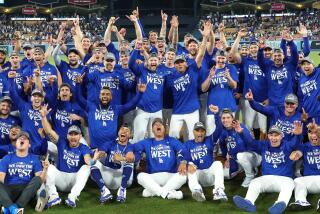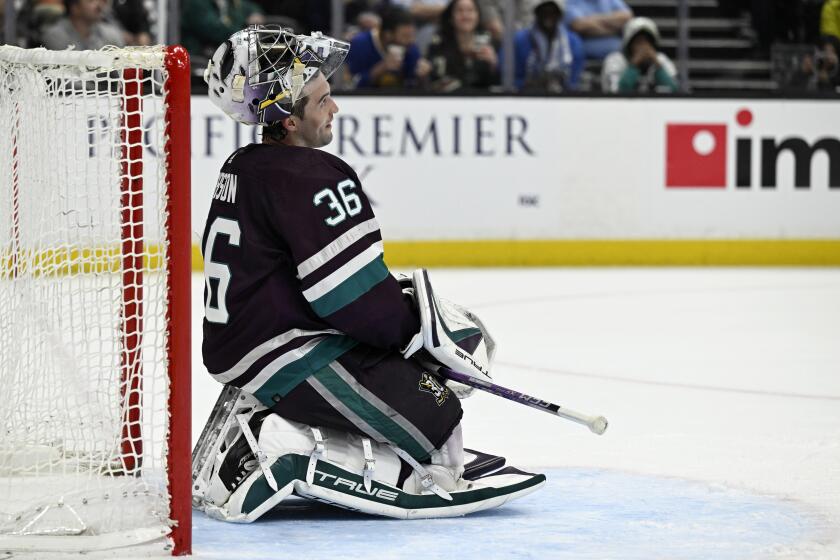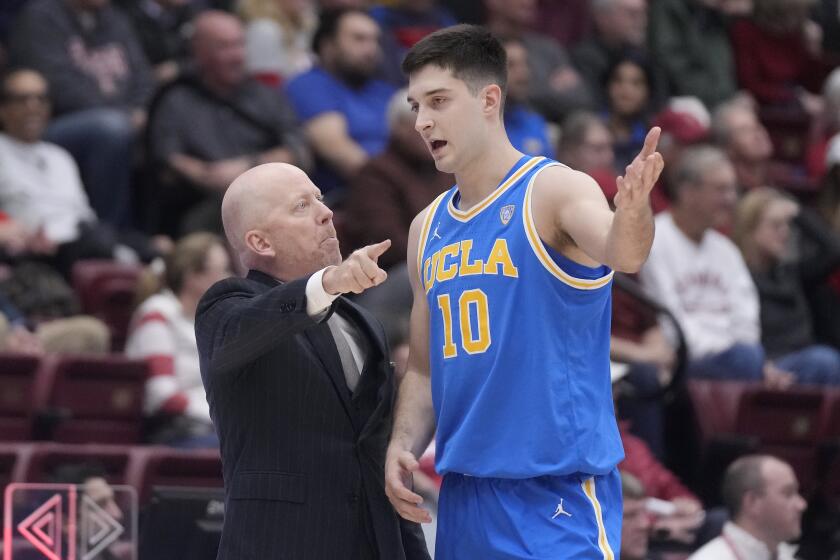PGA Tour’s New Riches Lure Best Golfers
The best place to see the best golfers is the PGA Tour, a one-stop shop for fans--and sponsors--seeking the top players in the world.
And a doubling of prize money over the next five years almost assures a tour with 41 of the top 50 players that it will lure the rest.
Make no mistake, the World Tour exists and it’s based in Ponte Vedra Beach, Fla., with Tim Finchem as commissioner.
Finchem said TV money that kicks in with the 1999 season would put the total prize money at $158.5 million in 2002 compared with $75.2 million this year--and compared with about $40 million on the European tour.
“We will see the world-class athletes in golf receive earnings more in line with world-class athletes in other sports,” Finchem said.
Left unsaid: “If they play in the United States.”
Only time will tell if this consolidation of power will benefit golf.
“If I was a member of the PGA Tour, I’d be happy with what he has done,” Alastair Johnston, head of the golf division at International Management Group, said about Finchem.
“Having said that,” Johnston said, “it may not be in the best interest of golf.”
IMG is in a unique position to observe changes in golf.
Through the management of dozens of players such as Tiger Woods, Colin Montgomerie and Jesper Parnevik and through promotion of events on nearly every world tour, IMG has an enormous stake in golf’s future. And its tentacles are so long it will win almost no matter what happens.
Some things seem certain even at this early stage in the reorganization of golf, which includes adding three world championship events in 1999.
Gaining the most are PGA Tour members, who will make a lot more money. Affected the least is the PGA of Japan. The fifth wheel on the international golf wagon spins in its own lucrative world.
The Australasia and Southern Africa tours are winners. They’ve already lost their best players to the United States and now get a piece of the pie by staging the Presidents Cup.
Only four of the 20 most prominent foreign players on the PGA Tour are from Europe. The rest are from the Australasia and Southern Africa tours, usually with a stopover on the PGA European Tour.
These include Greg Norman and Steve Elkington of Australia, Ernie Els of South Africa, Nick Price of Zimbabwe and Vijay Singh of Fiji.
Thus, the loser in the new world of golf stands to be the PGA European Tour, its united front being chipped away.
A decade ago, Seve Ballesteros, Faldo, Bernhard Langer, Sandy Lyle and Ian Woosnam rebelled against the PGA Tour rule that required a minimum of 15 tournaments played to maintain tour membership.
They stayed home, built bigger purses in Europe and fueled a golf boom with some stunning Ryder Cup victories.
But as much as the money grew in Europe, it grew even more on the PGA Tour. That, coupled with the fact that three of the four major championships--the defining line of golf greatness and surest way to wealth--are played in the United States, got players heading back to this side of the Atlantic.
Faldo, Els, Parnevik, Frank Nobilo and Lyle all left the European tour for the PGA Tour in the last few years.
That consolidation of talent in the United States could slow the world growth of golf, Johnston said.
“Tours throughout the world are going to be seen as second class by their constituency,” Johnston said. “That isn’t good at the end of the day for golf.”
Foreign tours get top players with appearance fees. Johnston said purses on the PGA Tour could grow so large it will make it impossible for overseas events to lure high-profile players.
He said another possible negative impact will be that the top players will play fewer events--while making even more money.
“The guys the people want to see the most won’t be playing as much,” said Johnston, who predicts that five years from now half the PGA Tour qualifying school will be foreign players.
Golf is truly an international game. The top five players in the World Golf Rankings--Woods, Norman, Els, Montgomerie and Price--are from five different nations and four continents.
All but Montgomerie play on the PGA Tour. Is he next?
And will such young stars as Darren Clarke of Northern Ireland and Lee Westwood of England follow?
If so, what will that mean for the future of the PGA European Tour--and for golf?
More to Read
Go beyond the scoreboard
Get the latest on L.A.'s teams in the daily Sports Report newsletter.
You may occasionally receive promotional content from the Los Angeles Times.










